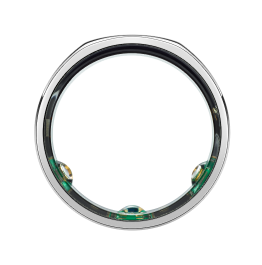Ever wonder what stress or anxiety looks like in your body? With Oura, you can see the physical effects of stress on the body with the new Daytime Stress feature, as well as your personal heart rate variability (HRV) metric. HRV is an effective indicator of how much your system is leaning towards a “stress” as opposed to a “rest” response.
READ MORE: What Is Heart Rate Variability (HRV)?
Your Heart Under Stress
Your autonomic nervous system (ANS) regulates your heart’s response to stress, among other physiological reactions. Under calm conditions, the rest-and-digest side of your ANS (also known as the parasympathetic system) inhibits the half that controls fight-or-flight side (known as the sympathetic system).
When stress kicks in, it eases up on the brakes, allowing the fight-or-flight system to accelerate and prepare your body to respond to stressors.
Your fight-or-flight system helps reallocate resources to prepare your body for action. Think of it as your ANS adding resources in some places (e.g., your muscles) while conserving them in other places (e.g., your digestion) when faced with danger.
Within your heart, your fight-or-flight system encourages your heart to beat more consistently, like a metronome, so your ANS can reallocate energy elsewhere. Its activation speeds up your heart rate but decreases the variability between beats (your HRV).
In contrast, your rest-and-digest system uses resources to maintain your body’s functions. Its activation drops your overall heart rate and increases your HRV. When your heart doesn’t need to beat fast in order to pump blood to your muscles, it can be more flexible and vary between beats.
In short, stress decreases HRV, while rest increases it.
READ MORE: HRV and Stress: What HRV Can Tell You About Your Mental Health
Patterns to Pay Attention To
A consistent pattern of physical and mental stress puts you at risk of injury, sickness, and long-term fatigue. HRV is a tool that can help warn you of an imbalance between activity and recovery.
In general, higher HRV is an indicator of better health and autonomic balance between your activation and rest systems. If you notice that your HRV is consistently low relative to your personal baseline, it’s likely that your fight-or-flight system is in overdrive and pushing your body at an unsustainable pace. You are taxed mentally, emotionally, hormonally, or physically.
On days when your HRV is low, or you feel stressed or anxious, experiment with ways you can shift the balance back to rest or consider keeping track of common daily stressors.
| Member Tip: Oura members can access the Daytime Stress and Resilience features, which provide specific insights into how your body balances stress with recovery over time. This allows you to make targeted changes to manage stress better. |
READ MORE: Resilience: Improve Your Ability to Recover From Stress
Tips for Stress Management
We’ve all searched for the cure to stress in different places — a late-night delivery menu, a glass of wine, or the distraction of our social media newsfeed. But the key to managing stress is getting to know your body better.
Start by incorporating activities that decrease stress and increase your HRV into your lifestyle. These include:
- breathing techniques
- meditation or mindfulness
- massage therapy
- time in nature
- yoga
- blue light blockers
- pleasurable hobbies
- increased fitness
- epsom salt bath or float tanks
| Member Tip: Oura members have access to meditations and breathing exercises in the Explore content on the Oura App, including free Headspace meditations. |
RELATED: 9 Simple (and Science-Backed!) Ways to Lower Stress





